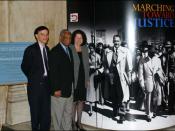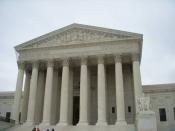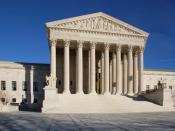To many around the world, the United States of America seemed as a perfect place to live in. It was a "free country", but that wasn't the case. From the outside, people of all different races were living together, on the inside though, segregation is what set people apart from each other. After the Plessy V. Ferguson trial of 1896, the Supreme Court found Homer Plessy of sitting in a "white" car, even though he was one eighth black. They found him guilty, and it made a huge impact on how things were going to be with whites and blacks. The "separate but equal" doctrine came into the picture and it covered all public areas that reserved an area for white folks, and an area for black folks. Finally, in 1954 in the case of Brown V. Board of Education, the doctrine came to end and the Supreme Court struck it down on May 17th, 1954.
The overturn of the doctrine was of the importance of education for all children, the changing public opinion about racial discrimination, and it had violated the Fourteenth Amendment.
Education has always been significant to how we live. When Brown V. Board of Education came forth to the Supreme Court, the values and morals of all the judges were brought out to the public. Chief Justice Warren made it quite clear of the decision that they made. At first he said, "In approaching this problem we cannot turn the clocks back to 1868 when the Amendment was adopted, or even to 1896 when Plessy V. Ferguson was written" (Source 4). Warren mentioned that how the doctrine came into play, and how it would affect society, otherwise known as segregation. He went on to enlighten everyone that "it is doubtful that any child may reasonably...


